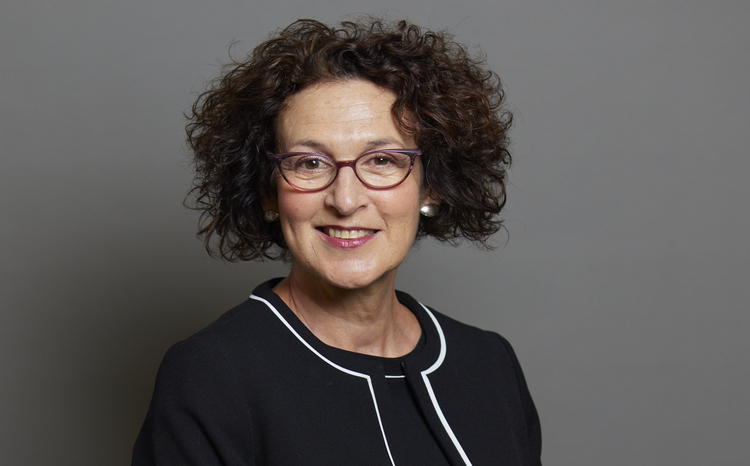Exclusive: First of its kind strategy to ‘mainstream’ digital clinical safety
- 17 September 2021

Digital leaders are set to be upskilled on patient safety under a first of its kind strategy that aims to “mainstream” digital clinical safety.
The Digital Clinical Safety Strategy aims to help the NHS provide a safer service when using digital technology, including through training and better use of data.
Developed in joint working with NHSX, NHS Digital and NHS England and Improvement, the strategy builds on the 2019 NHS Patient Safety Strategy.
Natasha Phillips, CNIO and director of patient safety at NHSX, told Digital Health News the strategy was about bringing digital into embedded patient safety practices.
“What the strategy principally is about is building a digital clinical safety culture across the whole of health and social care and mainstreaming digital clinical safety practice alongside the wider and much more embedded patient safety approaches we have in the system,” she said.
Phillips added that her experience as a CNIO taught her the importance of “reimagining patient safety through digital technologies”.
“Thinking all the way through from inception of the idea of doing something digital through to implementation, thinking safety as a thread all the way through,” she said.
“You need to design that in through your people and educate and empower them to be able to do that, and do it well.”
The strategy sets out a “clear vision” and recommendations on how to use digital to improve safety, as well as expanding staff access to digital safety.
It commits to a new model for digital clinical safety training across the patient safety and digital health workforce, with a specific focus on patient safety specialists, chief clinical information officers (CCIOs), chief information officers (CIOs), chief nursing information officers (CNIOs) as well as wider frontline teams.
Under the plan, the health service will for the first time be required to capture data on digital clinical safety issues in an attempt to better understand how to avoid concerns moving forward.
It will also provide an easier way for patients to report safety issues through a new Learning from Patient Safety Events Service, which replaces the National Reporting and Learning System.
Kelsey Flott, deputy director of patient safety at NHSX, told Digital Health News: “The strategy was really developed to have two key parts which was ensuring the safety of digital technologies but also making sure we use those technologies to improve patient safety.
“They’re two quite different things but both really important parts of digital clinical safety.”
The Covid-19 pandemic accelerated the use of technology and resulted in a clear demand for information about digital clinical practice. Flott said there were three key elements that the strategy aims to address based on this.
“The Covid recovery quite clearly relies on digital technologies and the positive legacy of the digital technologies that we stood up during the pandemic, and foremost in that is making sure those technologies are safe as we move into recovery,” she said.
“The next piece is around safety, we know there is a role for digital to safe lives and to save costs and we need to get right and get the evidence around it right.
“The last point is because patients are really interested, we’ve seen evidence coming out recently that patients and staff are really interested in knowing if the technologies are safety, how do they make them safer, how to meet some of the biggest patient safety challenges, so it’s in many ways meeting that demand.”
‘Clear’ demand for training
A key theme to come out of consultation with the health service on developing this strategy was that frontline staff were “excited” about learning more on using technology to improve safety.
The Digital Clinical Safety Strategy also sets recommendations on consolidating digital clinical safety resources into one place to make it easier to access.
The programme of work will also work with blueprinting teams to promote “how to do digital clinical safety well” and best practice.
“The training piece was the clearest piece that came out of our consultation, people are excited about training,” Flott told Digital Health News.
“At the moment we have a backlog in how much need we have for training and our new model proposes much greater access to e-learning material that is free and will continue to be free for all NHS staff.
“But also a more devolved model and really embedding the training capacity for digital clinical safety in other parts of the system.”
Phillips added that the consultation had “lit the fire” on patient safety.
“Safety is everyone’s responsibility and as a nurse, I know very well the importance of delivering safe care and what it looks like when everyone contributes to a culture of safety,” she said.
“Digital technology offers an opportunity to improve safety in clinical care through better reporting and monitoring, but we also need to ensure that new digital technologies are introduced safely.
“We will be empowering staff with the knowledge and skills to ensure safety will help us build a culture where safety is at the heart of all that we do.”
Programmes of work are already underway to drive improvements in medical device and implant safety. NHSX, NHS Digital and the Getting it Right First Time programme are using digital and data to better understand where improvements can be made on medical devices and implants through the Medical Devices Safety Programme.
It aims to accelerate the adoption of digital technology to improve the recording of medical devices implanted in patients at the point of care, then establishing new information systems to collect, link and analyse outcomes by procedure.
Registries will then be developed to support detailed analysis of outcomes data to drive improvements in patient safety and inform the NHS’s use of devices and implants.
A call to the Digital Health Networks
Phillips said the Digital Health Networks has a role to play in embedding digital clinical safety to “support each other and the wider [health] system”.
“The Digital Health Networks is such a key part and such a driving force for change in always pushing the boundaries of digital transformation, so we really want those Networks to work together to make sense of this,” she said.
“To think about what they’re doing in their own organisations and learn from each other, but also advocate and speak more broadly across the system.”





1 Comments
Is this not similar to the role that the clinical safety officers have in Trusts? Standards like DCB129/160 look at clinical safety of digitally enabled technology?
Comments are closed.